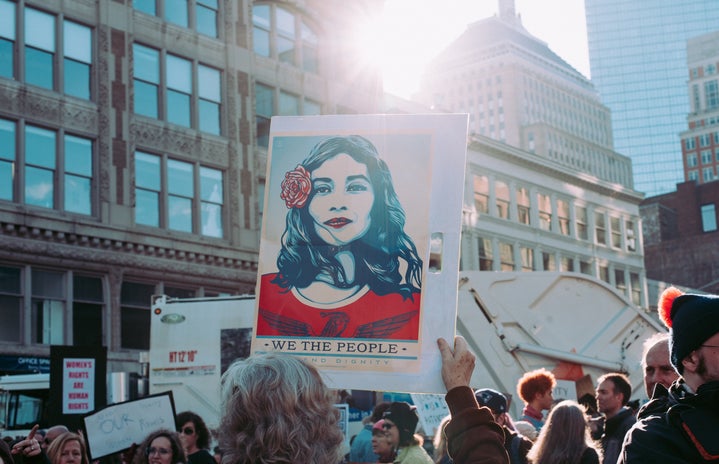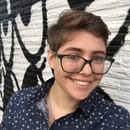On March 24th, 2018, 800,000 people participated in the DC March For Our Lives. This was a greater turnout than the 2017 DC Women’s March, the 1969 demonstration against the Vietnam War, and the 1963 March on Washington for Jobs and Freedom. It was also one of the biggest national protests against gun violence the nation has ever seen. Other cities saw turnout numbers rise to the 200,000 mark—and nearly a week later at the time of writing, the effects are still reverberating within social and governmental spheres alike. Given the USA’s record for gun violence—higher than any other developed nation—and the fact that the marches were largely organized by high school and college students (varying from city to city) is deeply impressive. The high turnout means that there may be real hope for change in gun legislation in the future.
However, in all of the marching, and the protesting, and the activism that has sprung up, there has been one area of gun control that has barely been touched on: the presence of gun violence in police brutality.
Given the heavy police presence at most of the March 24th marches, this is something that needs to be discussed, especially in the context of protests. While the police were ostensibly present at those marches to promote public safety, there is no getting around the fact that some people—particularly people of color—may very well have felt safer without them there.
This feeling is, unfortunately, not unfounded. In 2014, The Economist charted the deaths recorded by German, British, Japanese, and US police. The German law enforcement recorded eight deaths, while British and Japanese police kept their death toll to zero. American police, with a body count of 458, killed more people than the police force of any other country studied. In addition, a 2015 study done by The Guardian demonstrated that while racial minorities only made up about 37.4% of the general population, they made up 62.7% of unarmed victims killed by the police. While American law enforcement is much more violent than other countries in general, its violence disproportionately affects people of color much more than the white American population—making the police presence at marches today distinctly problematic.
The history of police presences at protests is no less so. The first violent protestation of the Vietnam war in 1967 was an instance of police brutality against University of Wisconsin students by the Madison, WI police force, landing 47 students and 19 police officers in the hospital after 30 officers had interrupted the previously peaceful protest with nightsticks and tear gas. This proceeded to spark further protests, including the 1969 march of protestors in Washington, where police with M-14s advanced on student activists and countercultural youths heavily armed with flowers. Police brutality, of course, has also historically targeted people of color in protests: the pictures of dogs and fire hoses being turned on peaceful Civil Rights protestors are hard to forget. And, as it’s worth remembering, the first gay pride parade was a riot.
For most of the 20th century, if there was a police presence at a protest, the odds are that the police were there to dissipate said protest by any means necessary. In a couple of ways, things have changed—while protests still occur on college campuses, very few today end in the beatings that U Madison students suffered. And, as shown by very recent protests like the Women’s March and the March For Our Lives, police don’t always use excess force on protesters in the modern day.
However, that doesn’t apply to everyone—today, nonwhite protesters are still at risk for police brutality. While both the Women’s March and the March For Our Lives were peaceful, there have been other recent protests that have received far harsher treatment from the police. In the 2014 Ferguson protests after the death of Mike Brown, tear gas was fired into a crowd of protesters responding to the grand jury decision that Officer Darren Wilson, Brown’s killer, would not be indicted. More recently, when members of the Lakota tribe at Standing Rock protested the dangerous and disrespectful location of the Dakota Access Pipeline, police did not hesitate to use dogs, tear gas, and hoses (the latter even in below-freezing weather). While protests organized by mostly-white women or mostly-white students are protected by the police, protests carried out by people of color are brutalized.
In addition to their differing behaviors regarding protests, police officers have proved again and again that they are more than willing to exercise gun violence against unarmed men of color. They proved it with Tamir Rice, a twelve-year-old boy with a toy gun. They proved it with Stephon Clark, a father of two with a cell phone, shot in his own backyard. They proved it with Eric Garner, with Mike Brown, with Philando Castile.
Most tellingly, they proved it with Nikolas Cruz, who was arrested near Marjory Stoneman Douglas High School, alive and uninjured, having just killed 17 of his former schoolmates in cold blood.
Fixing this is possible. A 2012 settlement in Seattle, focusing on training officers in their use of deadly weapons, requiring use-of-force reports for every instance of guns aimed at civilians, and exploring methods of de-escalation rather than force, resulted in both decreases in use of force by police and increases in the public’s trust in the law enforcement. It’s possible, though difficult, to repair the relationship between the police and the people they have failed to protect. But these reparations are hard-won and can be hard to maintain—even with the reform structure laid out; there’s a long road of restructuring ahead.
On March 24th, 2018, many joined under the banner of March For Our Lives—a good first step. But it can’t end there. When people march for lives, it must be remembered that brown and black lives are the ones most at risk of gun violence. When people march for anything, it must be kept in mind that the police surrounding the route may not be invested in keeping everyone safe. And when gun control is discussed, gun violence within American law enforcement has to be kept in mind—that just as the students of MSD deserve to attend school without fear, so do black communities deserve to interact with law enforcement without fear. This must be addressed—and it must be fixed.
[Feature image by Unsplash; second image by author; third image sourced from The Atlantic]Unsplash



